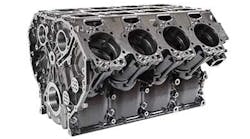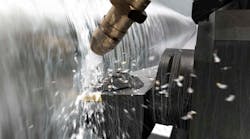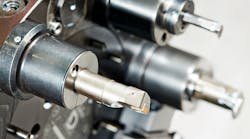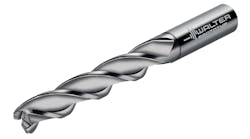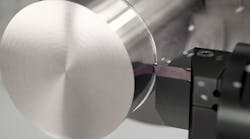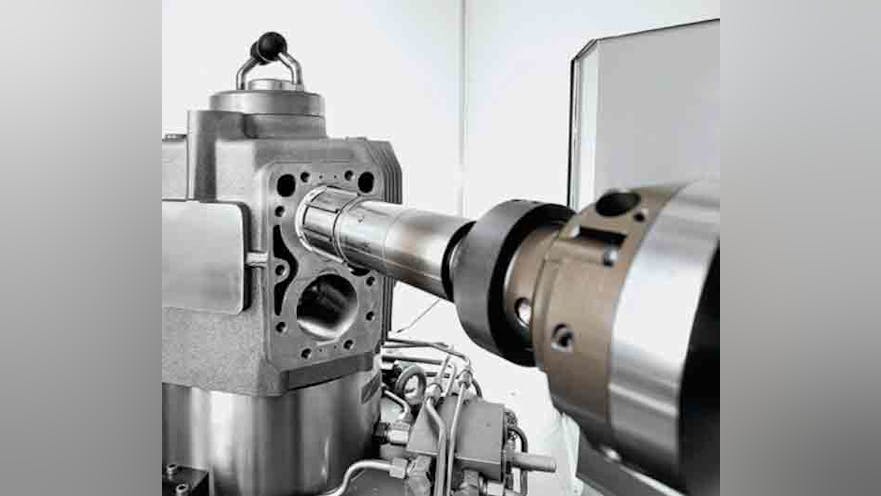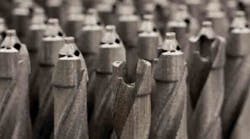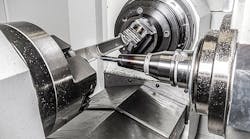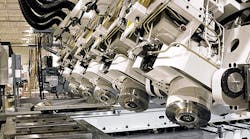New tooling, programming options add function, performance, value to Heller H-Series horizontal machines
Thanks to adaptable tooling and programming, Heller’s H-Series four-axis horizontal machines have single set-up boring capability. It’s possible for operators to convert raw parts to completed, cylindrically bored pieces with precise, controllable tolerances, with dramatically reduced tooling costs and machining times, according to the machine builder.
Heller’s NCU out-facing head, prepared for honing, can adjust the size, taper, surface and tolerance of a bore as it changes the size of the tool during honing. A Marposs, in-process gauge is incorporated into the head.
Heller collaborated with tooling specialist Diahon to program helical slide honing cycles. The Heller H series machines perform a continuous cross-grind — a function typical of custom honing machines.
Unlike those honing machines, however, bores with a cylinder form tolerance of just 1 µm can be produced in one set-up over a length of 300 mm, for example, eliminating the typical three-pass honing process and minimizing honing cycle time.
“Combined with a machining center as a standard machine, honing is efficient and cost-effective up to a certain batch size,” commented Diahon deputy CEO Bernd Sihling. “This is how, in one specific case, we were able to reduce the machine running times from 15 minutes for internal cylindrical grinding to 12 seconds by means of honing.”
“Automotive Tier One manufacturers can now avoid investing in dedicated honing systems for engine cylinder bores up to a certain volume production,” according to Vince Trampus, Heller US vice president - sales. “Machining centers offer the total processing flexibility the industry is asking for, and adding the honing process to machining center capability makes the case even stronger.”
Generally, ‘multitasking’ machines have not included honing among their options, partly because precise machining of cylindrical bores with tight tolerances and complex geometric and topological features tended to be achieved by other means, such as internal cylindrical grinding.
But, according to Bernd Sihling, honing can be incorporated into multi-tasking sequences: “Honing isn’t such a complex process,” according to the Diahon executive. “There are three distinctly different types: honing by means of a permanently set tool with a defined diameter; honing by means of a tool with a flexible diameter, the hone of which can be expanded by coolant pressure; and path-controlled honing on machining centers, as accomplished by Heller with its reliable, controllable out-facing head.”



